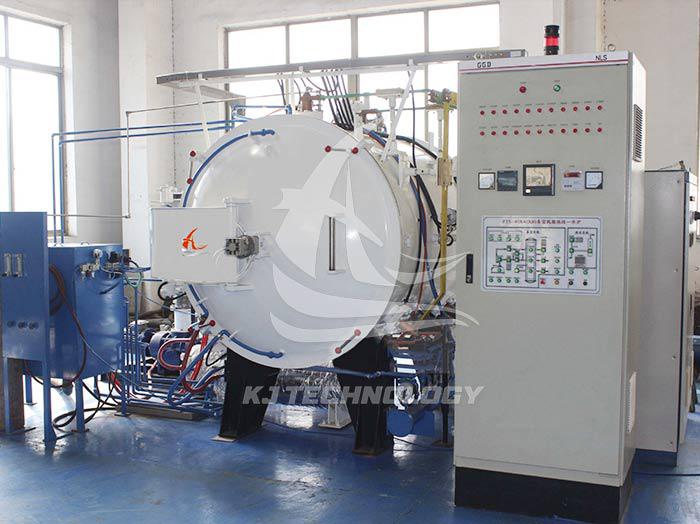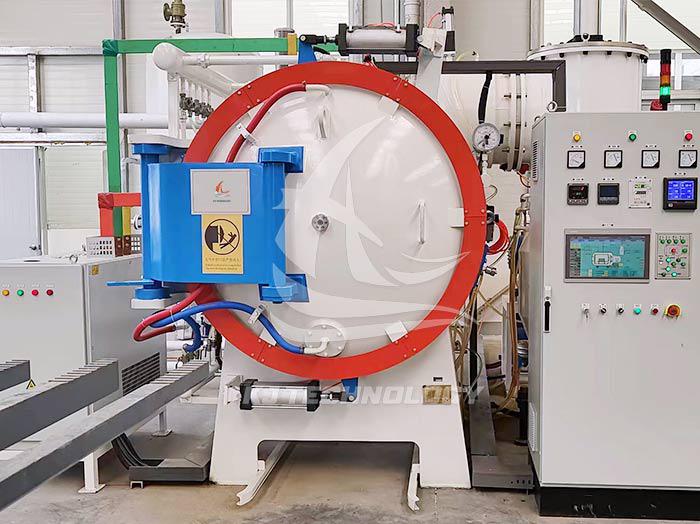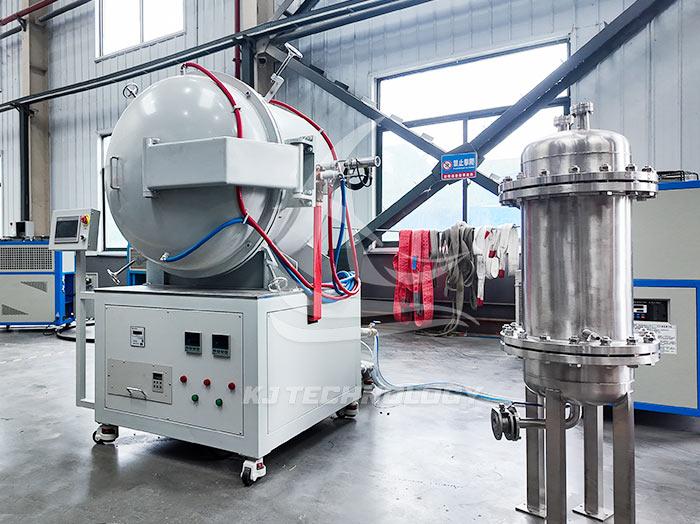What gases can be added to a high-temperature vacuum brazing furnace?
 11-20-2025 Author: KJ technology
11-20-2025 Author: KJ technology
The high-temperature vacuum brazing furnace can be filled with inert gas, active gas or mixed gas under specific process requirements to optimize welding quality, control atmosphere or achieve special process effects. The following is a detailed explanation of specific gas types and their application scenarios:
1. Inert gas: protects the welding environment and prevents oxidation
Argon gas (Ar)
Application Scenario:
When welding active metals such as titanium, zirconium, and niobium, argon gas can form an inert protective layer to isolate oxygen and avoid high-temperature oxidation embrittlement. For example, the connection between aircraft engine turbine blades and shafts needs to be brazed in a pure argon environment to improve joint toughness.
When welding aluminum alloy heat exchangers, introducing argon gas can reduce defects such as pores and cracks, and lower the leakage rate.
Helium (He)
Application Scenario:
For processes that require rapid cooling (such as rapid cooling after welding high-temperature alloys), helium gas can shorten the cooling time due to its high thermal conductivity (6 times that of argon gas).
When welding precision electronic devices (such as IGBT modules), helium can reduce thermal stress and avoid weld cracking.
2. Active gas: improves the wettability of brazing materials and promotes welding reactions
Hydrogen (H ₂)
Application Scenario:
Reductive atmosphere: Hydrogen can reduce metal oxides (such as oxide films on copper and nickel surfaces), improving the wetting properties of brazing materials. For example, when welding copper/aluminum dissimilar materials, introducing a mixed gas of hydrogen reduces the contact resistance.
Low carbon steel welding: Hydrogen can reduce the oxidation loss of carbon and avoid weld embrittlement.
Safety measures: Equipped with hydrogen leak detection and automatic cut-off devices to ensure safe operation.
Nitrogen (N ₂)
Application Scenario:
Non reactive metal welding: such as stainless steel, carbon steel, etc., nitrogen can replace argon to reduce costs. For example, when welding automotive chassis structural components, introducing nitrogen gas can reduce the formation of oxide scale and increase the strength of the weld seam.
Local atmosphere control: Nitrogen gas is introduced into the furnace zones to create a gradient atmosphere that meets the welding requirements of complex structures.
3. Mixed gas: comprehensive optimization of welding effect
Argon hydrogen mixture gas (Ar-H ₂)
Application Scenario:
Active metal welding: such as the connection of dissimilar materials between titanium alloy and stainless steel, by introducing mixed gas, it can simultaneously achieve inert protection and oxide film reduction, and improve joint strength.
Welding of precision electronic devices: such as power modules in electric drive systems, mixed gases can reduce porosity and improve reliability.
Nitrogen hydrogen mixed gas (N ₂ - H ₂)
Application Scenario:
Low carbon steel welding: Introducing mixed gas can reduce carbon oxidation loss and improve weld toughness.
Copper based brazing material welding: Hydrogen can reduce copper oxides, nitrogen provides inert protection, and comprehensively improves welding quality.
4. Timing and control points of gas introduction
Heating stage:
After initially vacuuming to below 1 × 10 ⁻ ³ Pa, inert gas is introduced to create a protective atmosphere to prevent material oxidation.
If a reducing atmosphere is required, hydrogen or a mixed gas can be introduced when heating to 400 ℃ -600 ℃ to reduce the oxide film in advance.
Insulation stage:
Maintain stable gas flow and ensure uniform atmosphere in the furnace.
Cooling stage:
During rapid cooling, helium or high flow argon can be introduced to shorten the cooling time.
If oxidation prevention is required, maintain inert gas protection before cooling to below 200 ℃.








